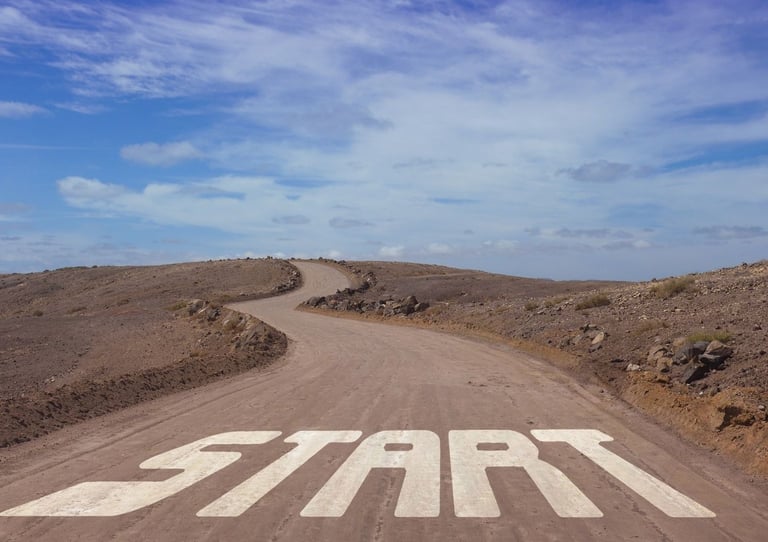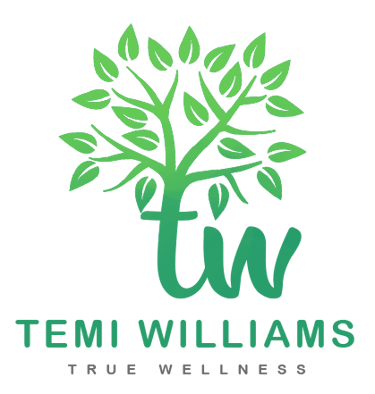Kicking Off Your Weight Loss Journey


Over the past 3 years, I have observed that the area where people struggle the most with in weight loss is in getting started. The confusion with this can be blamed on the number of options and suggestions out there on how to lose weight. There are several marketed diet restricted programs, weight loss teas, exercise-to-lose programs, etc. The opinions about what is good or not good are endless. This can be quite confusing; making it challenging to know where or how to get started.
I believe a weight loss program that will work for you as a person has to be custom built to fit you and your needs. But regardless of whatever weight loss method you settle with, below are a few things you can do to get started on your weight loss journey.
1. Take Stock
The first thing you want to do to get started on the weight loss train is to take stock of what it is that you eat regularly. Make a list of all the foods you like to eat, and then group them into three: Can eat much of; should eat moderately; should eat very sparingly. Personally, I don’t think any foods that you like eating should be classified as “never eat”. This is because as it is with any other thing, when you put a ban on something, you want it more. It’s just how we are wired as humans. So, if I know that some items on my food preferences are not a completely out of reach, I will not feel like my weight loss program is out to get me.
If you want to make it simpler, you can just group these lists into two: Good for weight loss and not so good for weight loss. When I did this list for myself at the start of my weight loss journey, I used the first groupings.
It’s important that you make this list for yourself. The usual temptation is to go online and find a generic list. But what if it contains foods that you don’t particularly like or that aren’t accessible to you? This is why you should make your own list.
You may say, “I don’t eat anything that is considered healthy.” That may not be true. Make the list first, and then decide. You may want to introduce more foods to your “can eat much of” group but make your list first.
This step is important because it gives you information about yourself; what it is you like to eat that may’ve contributed to your present weight. And separating your foods into groups helps you to know what you should focus more on. It also informs you on how to improve your food environment. You now know that when you go to the store you’ll want to buy more of your “can eat much of” foods and less of the other ones.
The question on your mind now may be, “How will I know which foods I can eat much of and those I shouldn’t eat a lot?” Simple. Foods that should be on your “can eat much of” group are foods that are calorie sparse, but highly nutritious, such as vegetables, some fruits, plant-based milk, some whole grains, such as oats, bulgur, etc. These foods have only a few calories even with large quantities and/or are very filling with little quantities.
Foods on your “should eat moderately” group are those that are not very low in calories (not high either), but are highly nutritious, are fiber packed and so very filling and are good for you; such as some high-sugar fruits like bananas and pineapples; some whole grains, such as brown rice, whole wheat bread, whole wheat pasta, etc.
Foods that should be on your “eat very sparingly” group are those that are not healthy, not good for weight loss, and can be considered as something you eat to “cheat”, such as ice-cream, pizza, fries. Overtime, on your weight loss journey, you can learn how to move foods in this group to the second group. For example, if you replace your love for ice-cream with frozen Greek plain yogurts (with fruits) or if you learn how to make pizza crusts with cauliflower, rather than lots of flour and you make the toppings with vegetables and fruits and bits of chicken; or if you choose to enjoy your homemade chicken sandwich with air-fryer oil-free homemade fries, instead of fast-food fries.
I learned to do a lot of these food swaps on my weight loss journey, and it made weight loss less burdensome for me and more of an adventure. See some of my regular food swaps here.
2. Understand how you eat
Having drawn up a list of what it is that you eat. The next thing you’d want to do is to find out HOW you eat. There is an ideal quantity you should consume everyday to lose weight, maintain your weight or gain weight.
If you eat more than your body burns per day, you will gain weight; If you eat only as much as your body burns, you will maintain your weight; and if you eat less than your body burns or uses up, you will lose weight.
So, you need to know how you’re eating. When I began my weight loss journey, I discovered that I ate two or three times what I was supposed to be eating. I majored on the “eat moderately” group and minored on the “eat much of” group. That means I ate more calories than I required per day. For example, my normal meal portions will be about 2 or 3 cups of cooked white rice, one or two sizeable pieces of beef or chicken with oily tomato sauce and no vegetables. Whereas, for a similar meal I was supposed to eat one cup of vegetables, 0.5-1 cup of rice, a moderate sized chicken or other meat and less oily or oil-free tomato sauce. I realized that I would eat over 1000 calories in one meal sometimes, when my body only required 1500 to 2000 calories to function per day. I also realized that I made my food with a lot of fat; and so, I would destroy and calorie-fill a perfectly healthy food such as vegetables or potatoes.
Knowing that how I was eating worked against my weight gave me the information I needed to make adjustments where necessary. Some adjustments I made included:
- Following the USDA food plate pattern for dishing my meals – more veggies and fruits, a moderate quantity of grains and proteins.
- Reducing or eliminating fats in my cooking. This helped reduce my food calorie-density by a mile; and sped up my weight loss journey.
You can check your daily caloric requirement on the right pane of this page.
3. Decide on a weight loss goal
You may be wondering why this step is not the #1 step. It’s not number 1 because it requires information from #1 & #2 above to be a SMART and achievable goal. Many times people just jump on say, ‘I want to lose 50kgs,’ without actually understanding what it would take to lose 50kgs. Now that you know your eating pattern (what you eat and how you eat), you can then be able to make a realistic goal on how much you want to lose.
Your goal should be SMART –
Specific: For example, I want to lose 50kgs. This is specific.
Measurable: This means you should know your current weight now, and measure how much you’re losing continuously as you go.
Achievable: Your weight loss goal is achievable if it can be done. For example, you currently weigh 150kgs; yes, you can lose 50kgs. But if you currently weigh 80-90kgs, losing 50kg is impossible unless you’re terribly sick.
Realistic (or Relevant): very similar to the above, but in addition, it’s usually based on when you want to lose your 50kgs by. For example, I want to lose 50kgs in one year. That’s a very realistic goal. But in one month, it’s unrealistic and maybe difficult to achieve. Also why is it relevant to you? How is it going to be beneficial to you?
Timebound: A successful goal will have a “due date”. That is, a time when you can review and measure success.
Based on the above, a SMART weight loss goal for our hypothetical 150kgs person can be: To lose 50kgs within one year.
4. Draw up a plan
You have identified what you eat, you have discovered how you eat, you have decided on a goal, now you have to make a plan.
Your plan should include all the steps you personally want to take to reach your goal. For our hypothetical 150kgs weight loser, his/her plan can include the following:
Change my food environment. Replace unhealthy foods in my house with foods on my “can eat much of” and “should eat moderately” groups. Get rid of anything that is not categorized in those two groups.
Create a food eating plan: Plan my meals with calorie consideration, quantity and method of cooking (broil, boil, steam, air-fry, bake, grill OVER frying) in mind.
Sign up at a gym (and pay for the instructor-support option): Be regular at the gym and push myself each time.
Count calories of everything I eat.
Weigh myself every morning, and record my weight every week.
Etc.
5. Determine to enjoy the journey
I think this step is very important because the longing to lose weight can sometimes be very depressing. Society paints a negative picture of the obese or overweight person; and this can put pressure on the person who wants to lose weight. One thing we must always remember is that one does not become overweight or obese in a day, so losing weight takes time, and it takes discipline and efforts. It’s a journey, a lifestyle, and it takes time to build. So, make up your mind to enjoy it. See it as an adventure where you learn and grow. This will build your motivation and keep you on track even on those difficult days.
I do hope these few steps can get you started on your journey. Let me know how it goes.
How much calories should you eat daily? Find out here...




